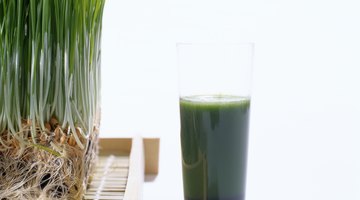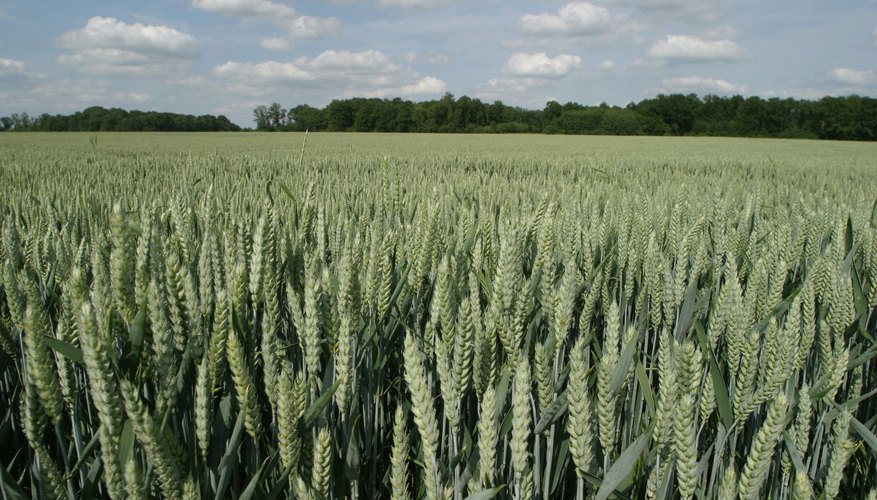Wheat germ and wheat grass are both parts of the same plant. Wheat germ is part of the wheat grain, or kernel, which is harvested on a commercial scale worldwide. Wheat grass is the shoot that sprouts from the planted kernel, and is generally grown and harvested on a much smaller scale. They look completely different and each has its own nutritional benefits.
Appearance of wheat germ

Wheat germ looks like a hard, nutty seed that forms part of the grain or “wheat berry.” For many years it was removed, together with the bran (the outer husk of the grain), and used for animal feed, leaving the white flour for human consumption. If you have eaten granary bread, you will have noticed the small whole wheat germ – especially if you bite down hard on an uncracked one accidentally.
Appearance of wheat grass

Wheat grass looks a lot like regular grass. It is a vibrant green with flat, broad leaves. Often grown in trays for personal consumption, it is harvested when it reaches 18 to 20 cms in height. You will see fields of wheat shoots in late spring in the UK. These will continue growing and ripening ready for harvesting by machine in August.
- Wheat grass looks a lot like regular grass.
- You will see fields of wheat shoots in late spring in the UK.
Wheat germ nutrition
One wheat germ is a small powerhouse of nutrition. It contains Vitamin E, B Vitamin complex, zinc, iron and potassium – all of which are necessary for the human body to function properly. Also the germ is a source of wheat germ oil, often used in skin care products.
Wheat grass nutrition
Wheat grass contains Vitamins A, C and E, plus iron, calcium, magnesium, amino acids, and chlorophyll. Proponents of wheat grass consumption also claim that it can kill harmful bacteria, boosts immunity, and improves conditions, such as diabetes, anaemia and even cancer. However, there is no scientific proof of these claims at present.
How to consume wheat germ
Wheat germ is most commonly consumed in bread and related products. You can purchase it toasted, ready to add to cereal or yoghurt. It can be ground and used in sorts of dishes – from biscuits to stews. You can find wheat germ in many forms in your local health food shop and in the baking and health food sections of your supermarket.
- Wheat germ is most commonly consumed in bread and related products.
- You can find wheat germ in many forms in your local health food shop and in the baking and health food sections of your supermarket.
How to consume wheat grass
Wheat grass is put through a juicer to extract the liquid from the leaves. It cannot be eaten as is. As a juice it has an acquired taste and may benefit from being blended with vegetable or fruit juice. The juice can also be incorporated into soups and stews. To obtain the maximum benefit, it is best to grow and harvest your own wheat grass. However, you can buy wheat grass products, such as powder, liquid extracts and tablets at health food stores.
- Wheat grass is put through a juicer to extract the liquid from the leaves.
